Peaks, Temples, and Trails: The Best Chopta Tour Package Awaits
Published on July 01, 2025
Chopta tour package, Tucked away in the Garhwal Himalayas, Chopta is more than just a destination—it's a journey that blends adventure, spirituality, and serenity. Whether you're a nature lover, a spiritual seeker, or a couple craving a romantic getaway, the Chopta tour packages offer something unforgettable for everyone. From trekking sacred trails to witnessing sunrise from snow-laced peaks, Chopta welcomes you with open skies and pine-scented air.
Why Choose a Chopta Tour?
Chopta, also known as the "Mini Kashmir of Uttarakhand" (though we like to skip clichés), is a tranquil hamlet surrounded by alpine forests and majestic Himalayan peaks. The region is famous for the Chopta Tungnath trek, Chandrashila summit trek, and the Tungnath temple trek—each blending thrill and spiritual energy.
With specially curated Chopta tour packages from Delhi, Haridwar, Rishikesh, and Dehradun, exploring this Himalayan gem is now easier, safer, and more comfortable.

Sample Itinerary (3 Days / 2 Nights) with TourMyHoliday
Day 0: Departure from Delhi – Overnight Journey
10:00 PM: Depart from Delhi by AC Volvo bus or shared cab or tempo traveller towards Chopta.
Overnight: Onboard journey to Sari Village (approx. 12–14 hours).
Day 1: Arrival at Sari Village – Deoria Tal Trek & Bonfire Night
Morning: Reach Sari Village , check-in at cottages.
Afternoon: Begin trek to Deoria Tal (3 km, approx. 1.5 hrs one-way).
Enjoy scenic views of Himalayan peaks reflected in the crystal-clear lake.
Evening: Return to cottages, relax, and enjoy a bonfire & DJ night under the stars.
Stay: Overnight in cottages at Sari Village.
Day 2: Chopta – Tungnath Temple Trek to Chandrashila Summit
Early Morning: Drive to Chopta (approx. 1 hour).
Trek: Start the Tungnath Temple trek (3.5 km, 2–3 hours).
Visit Tungnath Temple (highest Shiva temple), then ascend to Chandrashila Peak (1 km further).
Breathtaking 360° views of Nanda Devi, Trishul, Kedar Dome, and more.
Afternoon: Return to Chopta for lunch.
Evening: Free time to explore local cafes or nature trails.
Stay: Overnight in cottages at Chopta.
Day 3: Explore Ukhimath & Dhari Devi – Return to Delhi
Morning: Visit Ukhimath (winter seat of Lord Kedarnath) and Dhari Devi Temple (on Alaknanda River).
Afternoon: Depart for Delhi via Devprayag.
Evening/Night: Stop for dinner en route.
Arrival: Reach Delhi by late night.
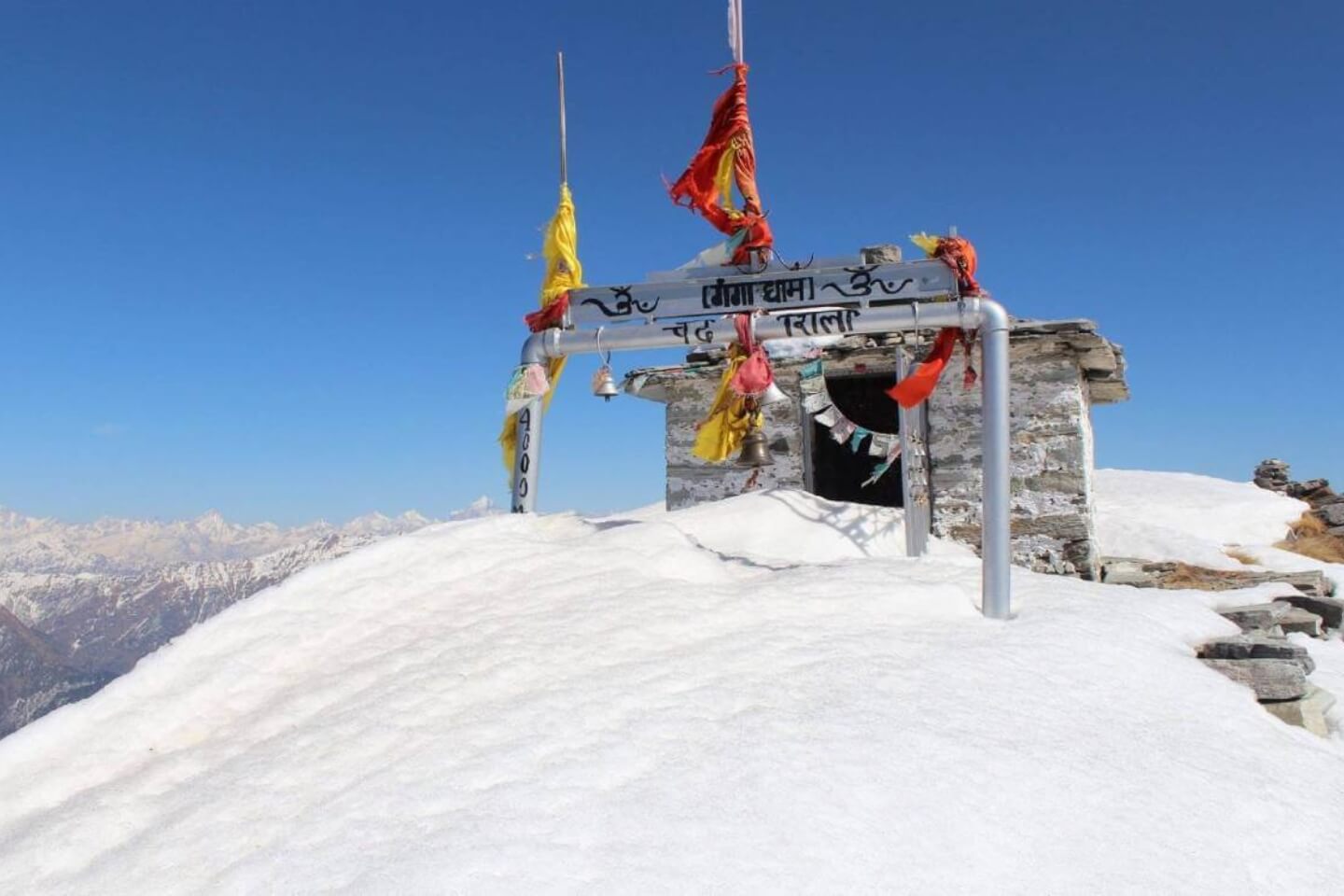
Inclusions:
Booking a Chopta tour package means everything important is taken care of so you can focus on the adventure. Here's what’s included:
Travel & Transfers
-
Round-trip transportation from Delhi/Haridwar/Dehradun/Rishikesh by tempo traveler, AC cab, or shared vehicle
-
Local transfers to Tungnath trek base, Sari village, or camping points
Accommodation
-
Stay in camps, alpine tents, homestays, or mountain cottages
-
Double/triple sharing rooms with bedding and blankets
-
Attached or shared washrooms (as per package)
Meals
-
Nutritious vegetarian meals (breakfast, dinner)
-
Evening tea and light snacks (depending on itinerary)
-
Bonfire with snacks on one evening (weather permitting)
Treks & Sightseeing
-
Guided Chopta Tungnath trek and Chandrashila summit trek
-
Local exploration (Deoria Tal, Sari village if included)
-
Tungnath temple trek permit and guide charges
Safety & Support
-
Trek leader and local support staff
-
First-aid kit, basic medical assistance
-
Entry/forest permits as required
Exclusions:
While we’ve packed in most essentials, here’s what’s not part of the base Chopta tour package price:
Personal Expenses
-
Meals during transit (roadside dhabas/cafes en route)
-
Bottled water, snacks, or beverages outside meal plan
-
Tips to staff, guides, or drivers
Optional Add-ons
-
Mules or porters (can be arranged at extra cost)
-
Adventure activities (ziplining, rappelling, etc. if offered nearby)
-
Extra sightseeing beyond mentioned itinerary
Emergency & Insurance
-
Travel or health insurance
-
Evacuation/rescue operations in case of emergency
-
Costs arising from weather delays, landslides, or roadblocks
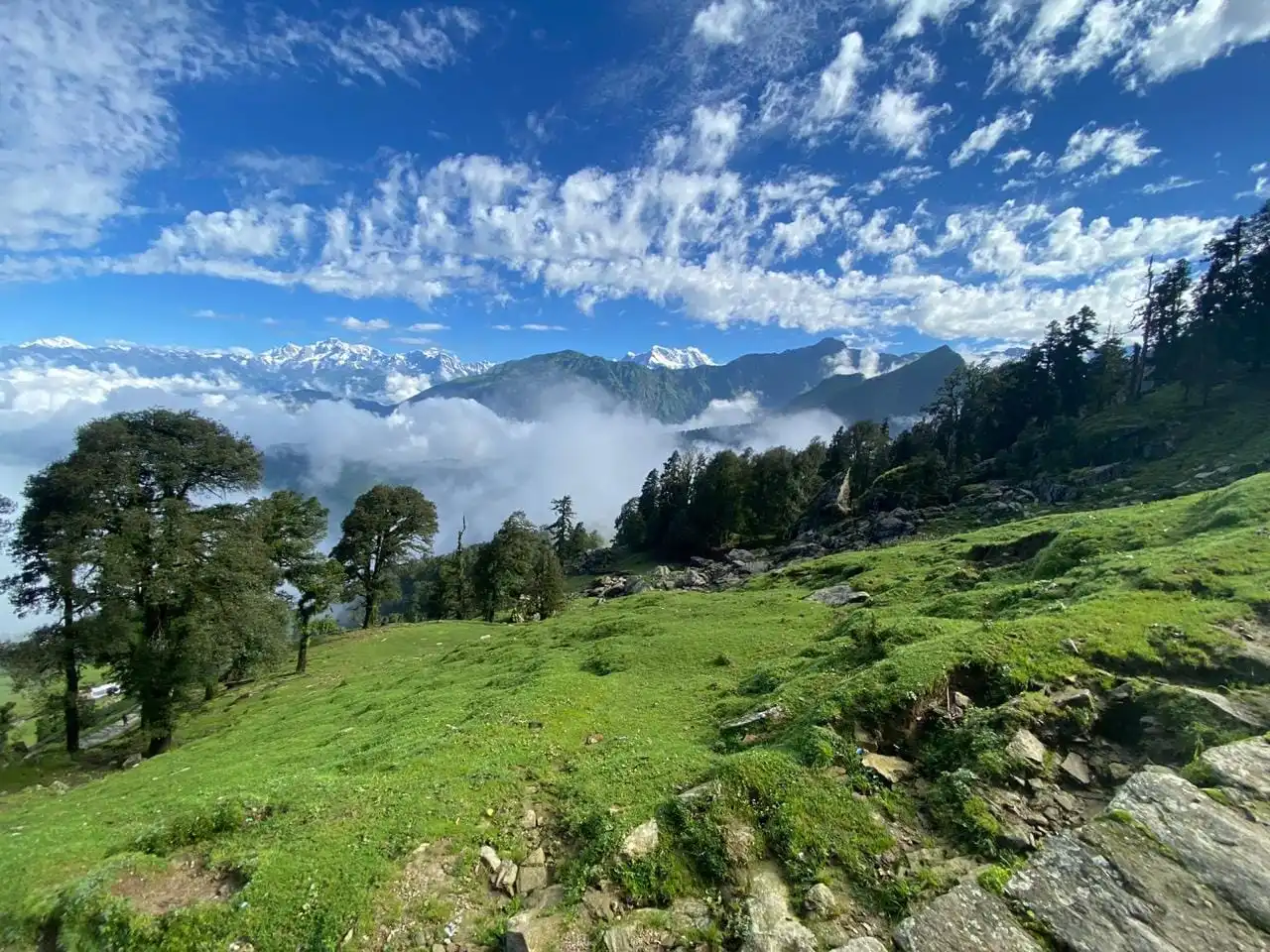
Where the Mountains Embrace You: Accommodations in Chopta
Staying in Chopta is less about luxury and more about connecting with the raw beauty of the Himalayas. Whether you're gazing at snow-dusted peaks from a tent or waking up to birdsong in a cozy cottage, accommodations in Chopta offer a front-row seat to nature’s untouched magnificence.
Here’s what you can expect when booking your Chopta tour package:
1. Alpine Camps Under the Stars
Chopta is famous for its stargazing nights and chilly mornings. Alpine tents—comfortable and well-equipped—offer the perfect way to experience it.
-
Best for: Adventure seekers, trekkers, budget travelers
-
Facilities: Sleeping bags/blankets, floor bedding, shared or attached washrooms
-
Extras: Bonfire nights, sunrise views of Kedarnath and Chaukhamba peaks
2. Himalayan Cottages with a View
If you prefer walls over canvas, opt for wooden cottages or guesthouses surrounded by forests and meadows. These are ideal for couples or families who want privacy and comfort with a rustic charm.
-
Best for: Couples, families, romantic travelers
-
Facilities: Double beds, attached bathrooms, hot water, mountain-view windows
-
Highlights: Cozy interiors, easy access to trek routes, Garhwali hospitality
3. Budget Guesthouses in Sari & Duggalbitta
Looking for affordability with local warmth? Villages like Sari, Duggalbitta, and Baniyakund offer simple but clean guesthouses run by locals. Great for backpackers or group travelers.
-
Best for: Solo travelers, students, budget groups
-
Facilities: Basic bedding, vegetarian food, electricity backup (limited)
-
Plus: Close to trek starting points like Deoria Tal and Tungnath trail
What Makes Staying in Chopta Special?
-
Scenic surroundings: Most stays offer direct views of Himalayan peaks, forests, or valleys.
-
Peace & privacy: No crowds, no noise—just nature and your thoughts.
-
Local connection: Many properties are run by Garhwali families who offer warm meals and cultural insights.
-
Included in packages: Accommodations are typically bundled into your Chopta tour packages, including meals and basic facilities.

Whispers of the Wild: Flora & Fauna of Chopta Valley
Tucked between snow-clad peaks and rolling alpine meadows, Chopta is a natural haven where every step reveals a new shade of green and every rustle hints at hidden wildlife. It’s not just a trekking destination—it’s a living Himalayan ecosystem. Whether you're on the Chopta Tungnath trek or simply walking through its deodar forests, the flora and fauna of Chopta will captivate your senses.
Himalayan Flora: Nature’s Blooming Canvas
The forests of Chopta are home to lush alpine vegetation, which changes character with each season.
-
Rhododendrons: In spring (March to May), the valley turns scarlet and pink with blooming Buransh (rhododendron) flowers—an absolute visual treat for nature lovers and photographers.
-
Deodar & Oak Trees: Towering deodar, oak, and pine forests cover much of the region, offering fresh air, shade, and a calming fragrance.
-
Medicinal Herbs: Chopta’s meadows also grow rare herbs used in Ayurveda, making it a hidden treasure for herbalists and botanists.
During your Chopta tour package from Delhi, don’t miss a chance to walk through these natural gardens—you’ll feel like you’re in another world.
Himalayan Fauna: Wildlife in the Wild Silence
The tranquil surroundings of Chopta are home to diverse wildlife that thrive in its protected habitats.
-
Musk Deer & Barking Deer: If you're lucky, you might spot a musk deer or hear the distinct call of a barking deer hidden in the underbrush.
-
Himalayan Monal: The state bird of Uttarakhand, the brightly colored Monal, can often be seen dancing through the trees—especially during the early mornings.
-
Himalayan Langurs: Social and curious, these long-tailed monkeys are often spotted in groups, playfully jumping across branches.
-
Leopards, Foxes & Wolves: While elusive, the deeper forests of Kedarnath Wildlife Sanctuary (which includes parts of Chopta) shelter predators like leopards, red foxes, and Himalayan wolves.
-
Birdlife: With over 200 species of birds, Chopta is a paradise for birdwatchers. Species include snow pigeons, eagles, woodpeckers, and griffon vultures.
A Naturalist’s Paradise
Chopta falls under the Kedarnath Wildlife Sanctuary, one of the largest protected areas in the Himalayas. This means the region’s flora and fauna are preserved under strict environmental regulations—making your Chopta Chandrashila trek not just scenic, but also ecologically enriching.
Whether you're an amateur birder, an aspiring botanist, or simply someone who appreciates the raw beauty of nature, Chopta’s flora and fauna offer a deep, peaceful connection to the living world.

Pack Smart, Trek Smarter: What to Carry & What to Skip for Chopta
Preparing for your Chopta tour package isn’t just about booking the best views—it's about packing right for the trails, temperatures, and terrain. Whether you're going for the Chopta Tungnath trek, the Chandrashila summit, or simply to soak in the alpine serenity, here's your ultimate packing guide.
What to Pack: Essentials for a Smooth & Scenic Trip
Clothing & Layers
-
Thermal innerwear (especially in winter and early mornings)
-
Fleece or down jacket for cold evenings
-
Waterproof windcheater or poncho (a must during spring/monsoon)
-
Quick-dry trekking pants and 1–2 T-shirts
-
Woolen cap, gloves, and muffler
-
Woolen socks + cotton socks (carry extras)
Footwear
-
Sturdy trekking shoes with good grip
-
Light slippers/sandals for evenings
Personal Gear
-
Daypack or rucksack (35–50L)
-
Reusable water bottle or hydration pack
-
Torch/headlamp with spare batteries
-
Sunglasses, sunscreen, and lip balm (high SPF recommended)
-
Personal toiletries + quick-dry towel
Health & Safety
-
Personal medicines + first-aid kit
-
Moov/Vicks, band-aids, and ORS
-
Face mask, hand sanitizer, insect repellent
Bonus Must-Haves
-
Camera or binoculars (for birdwatching & Himalayan views)
-
Power bank + phone charger
-
Travel documents & ID proofs
What to Skip: Leave These Behind for a Lighter Trek
Heavy Luggage
-
Avoid trolleys or oversized suitcases. Roads to Chopta can be rough and require walking—carry a backpack instead.
Fashion Footwear
-
Heels, flats, or canvas shoes won’t survive the rocky treks—ditch them for sturdy boots.
Makeup & Unnecessary Cosmetics
-
The mountain glow will do more for your skin than any highlighter. Carry just basic skin essentials.
Junk Food & Excess Snacks
-
Carry dry fruits, energy bars, and 1-2 snack packs at most. Local food is available and comforting.
Loudspeakers or Bluetooth Speakers
-
Respect the silence of nature and the sanctity of temples like Tungnath. Skip the noise.
Excessive Electronics
-
There's limited to no mobile network. Leave the laptop/tablet behind—disconnect to reconnect.
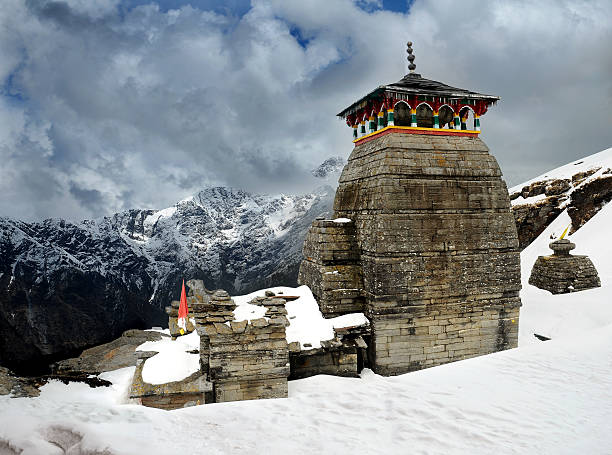
Weather in Chopta: A Seasonal Guide to the Mini Himalayan Paradise
Nestled at an altitude of around 2,700 meters in Uttarakhand, Chopta is a year-round destination that surprises travelers with its ever-changing moods. From snow-covered meadows in winter to rhododendron blooms in spring, Chopta’s weather shapes the entire travel experience. Whether you're planning the Chopta Tungnath trek, the Chopta Chandrashila trek, or a peaceful escape, understanding the weather is key.
Let’s explore how each season transforms this Himalayan gem—and how you can make the most of your trip in any month of the year.
Winter in Chopta (December to February)
Atmosphere & Experience:
Chopta transforms into a snow-cloaked wonderland during winter. Snowfall can begin as early as December and intensify through January. By mid-winter, snow blankets the trails, trees, and rooftops, offering surreal white panoramas and thrilling trekking conditions.
Temperature:
-
Day: –5°C to 5°C
-
Night: –15°C to –5°C
What to Expect:
-
Deep snow on trails like Tungnath and Chandrashila
-
Frozen waterfalls, icy roads, and crystal-clear skies
-
Limited but scenic accommodations with basic heating
Travel Note:
Winter treks are possible but challenging. Proper gear and experienced guides are essential. Roads may be blocked due to snowfall, so routes may vary depending on accessibility.
Spring in Chopta (March to May)
Atmosphere & Experience:
Spring is when Chopta comes back to life after its long, cold slumber. The melting snow gives way to blooming rhododendrons, locally called Buransh, painting the forests in shades of pink and red. This is the most vibrant and photogenic season.
Temperature:
-
Day: 10°C to 20°C
-
Night: 2°C to 8°C
What to Expect:
-
Ideal time for Chopta Tungnath trek and Chandrashila summit trek
-
Clear blue skies and mild temperatures
-
Rhododendron blooms and lush alpine meadows
-
Full accessibility of roads and trails
Travel Note:
This is one of the most popular times to visit Chopta, especially for trekkers and nature lovers. Advance bookings for accommodation are recommended due to the high demand.
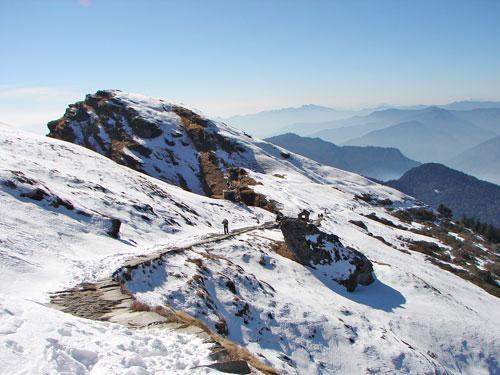
Summer in Chopta (June to mid-July)
Atmosphere & Experience:
Summer in Chopta is warm and comfortable, offering a perfect escape from the scorching plains. It’s a great time for family vacations, romantic escapes, and peaceful trekking experiences.
Temperature:
-
Day: 18°C to 30°C
-
Night: 10°C to 17°C
What to Expect:
-
Pleasant daytime weather, chilly evenings
-
Green landscapes, flowing streams, and cool mountain breezes
-
Active trekking routes with minimal snow
Travel Note:
Late June marks the beginning of the monsoon transition, so travelers should be prepared for occasional showers and slippery trails.
Autumn in Chopta (October to November)
Atmosphere & Experience:
Autumn is the hidden gem of seasons in Chopta. After the rains, the skies clear up, the trails dry, and the air turns crisp and cool. This is arguably the best time to witness wide-open views of Himalayan peaks.
Temperature:
-
Day: 10°C to 18°C
-
Night: 0°C to 8°C
What to Expect:
-
Bright days and star-studded nights
-
Clean trekking trails with minimal mud or snow
-
Perfect conditions for Chopta Chandrashila trek and Tungnath temple trek
Travel Note:
Autumn is perfect for photography, trekking, and spiritual travelers heading to Tungnath, especially before snow returns in December.
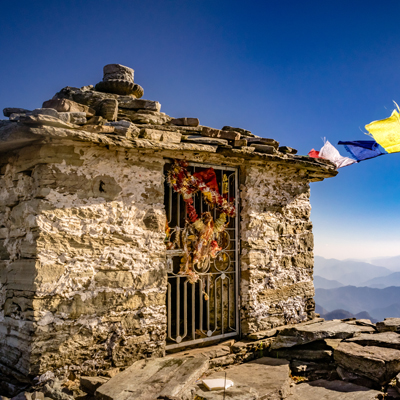
How Weather Impacts Treks in Chopta
Chopta Tungnath Trek:
-
Best Time: March to June & October to November
-
Winter Version: Challenging, with snow gear required
-
Avoid: Monsoon season due to slippery trails
Chandrashila Summit Trek:
-
Best Time: April to May & September to November
-
Sunrise View: Autumn is ideal for panoramic mountain sunrises
-
Snow Trekking: Possible in Jan-Feb but physically demanding
Weather-wise Packing Tips
To enjoy Chopta’s weather in any season, here’s what you should consider packing:
For Spring & Autumn:
-
Warm fleece, jacket, woolen cap
-
Lightweight trek pants and quick-dry shirts
-
Sunglasses, sunscreen, lip balm
For Winter:
-
Heavy woolens, thermals, gloves, snow boots
-
Waterproof trekking shoes with spikes
-
Down jackets and insulated sleeping bags (if camping)
For Summer:
-
Breathable clothing, sunscreen, hat
-
Light raincoat or poncho (especially in June)
For Monsoon:
-
Waterproof jacket, extra socks
-
Quick-dry clothes and waterproof bags
-
Caution: Avoid carrying electronics in backpacks without rain covers

Weather as a Part of the Experience
The weather in Chopta isn't just a backdrop—it's part of the adventure. Snowy trails in winter, blooming forests in spring, warm sunshine in summer, misty mornings in monsoon, and crystal-clear skies in autumn—each season brings out a different face of this Himalayan haven.
Whether you book a Chopta tour package from Delhi, Tungnath trek package from Rishikesh, or a Chopta tour package for couples, knowing the weather will help you plan, pack, and prepare for a truly unforgettable mountain escape.
Frequently Asked Questions:
1. What is the best time to visit Chopta for trekking?
Answer: The best time for trekking in Chopta is from March to May and September to November, when the weather is clear, skies are bright, and the trails are dry. These months are perfect for the Chopta Tungnath trek and Chandrashila summit trek.
2. Can I visit Chopta during winter snowfall?
Answer: Yes, Chopta is open in winter, especially in December and January, when it becomes a snowy paradise. However, trekking in winter requires proper snow gear, local guides, and experience. Some roads or trails may be closed due to heavy snow.
3. How cold does it get in Chopta during winter?
Answer: Winter temperatures in Chopta can drop to –15°C at night and range from –5°C to 5°C during the day. Travelers should pack heavy woolens, snow boots, and proper thermal layers if planning a winter visit.
4. Is it safe to visit Chopta during the monsoon season?
Answer: While the valley is lush and green during monsoon (July–September), landslides and slippery trails can make travel risky. It’s not ideal for trekking, but great for solitude seekers and photographers with caution.
5. What should I pack according to Chopta’s weather?
Answer: In spring/autumn, pack layered clothing, a fleece jacket, and waterproof gear. In summer, light clothing and a raincoat are ideal. For winter, carry thermal wear, snow jackets, gloves, and woolen socks. Always pack a rain cover and trekking shoes.
6. Does snow affect the Tungnath and Chandrashila trek routes?
Answer: Yes. From December to March, snow can block parts of the Tungnath temple trek and Chandrashila trek. While experienced trekkers still attempt it with guides, beginners are advised to visit after the snow melts in spring.
7. What kind of weather can I expect in spring (March–May)?
Answer: Spring in Chopta offers pleasant daytime temperatures (10°C–20°C) and cool nights. Rhododendron flowers bloom, skies are mostly clear, and trekking routes are safe—making it one of the best seasons to visit Chopta.
8. Is the Chopta tour package available year-round despite weather changes?
Answer: Yes, Chopta tour packages are available year-round. However, the itinerary, accommodation, and transport options may vary with the season, especially in winter and monsoon. Always confirm current conditions before booking.
9. Can couples enjoy Chopta during colder months?
Answer: Absolutely. Many couples love visiting Chopta in autumn and early winter, when the weather is chilly but romantic. Opt for a Chopta tour package for couples with cozy cottages, bonfire evenings, and guided day treks.
10. What makes Chopta weather special compared to other hill stations?
Answer: Chopta offers a raw, untouched Himalayan climate, far from commercial crowds. Its clear skies, alpine meadows, snowy winters, and floral springs create a nature-rich experience unmatched by most other tourist hill stations.
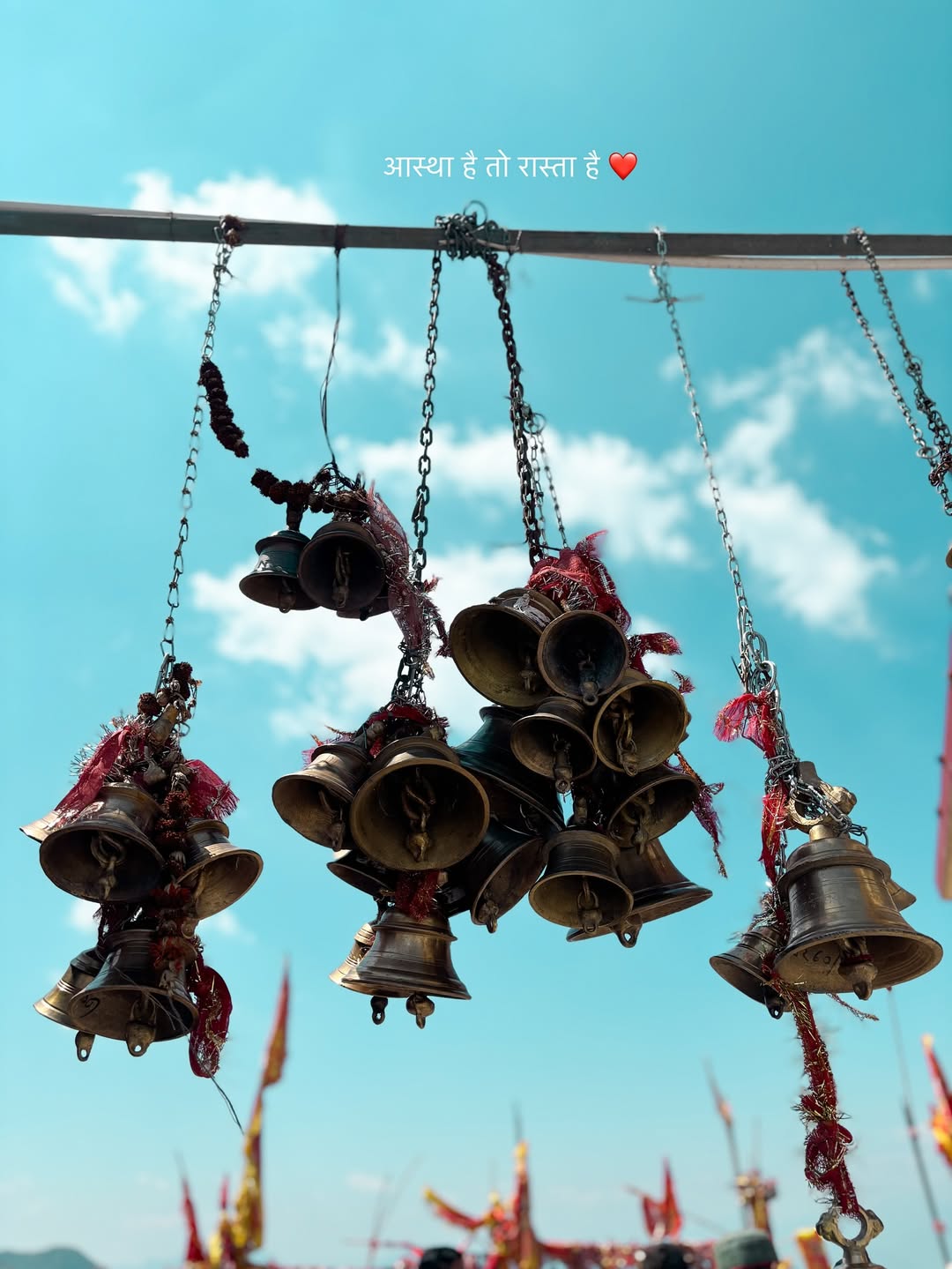

.jpg)
